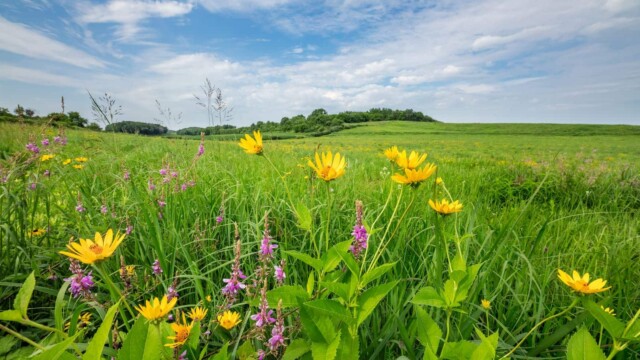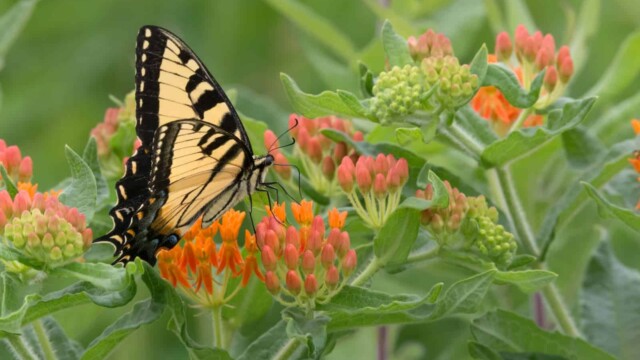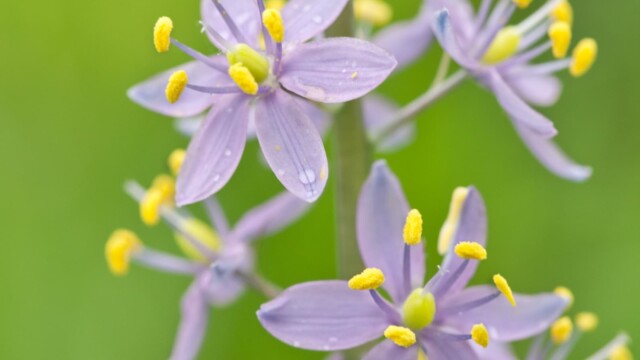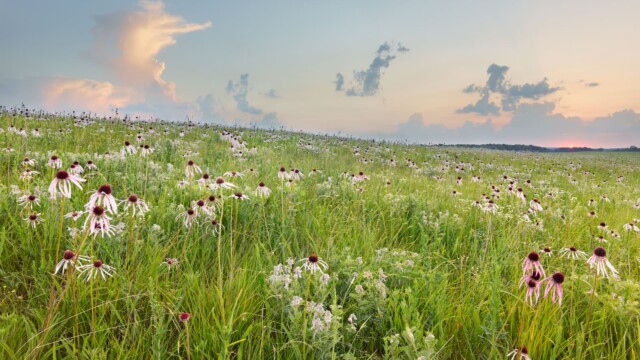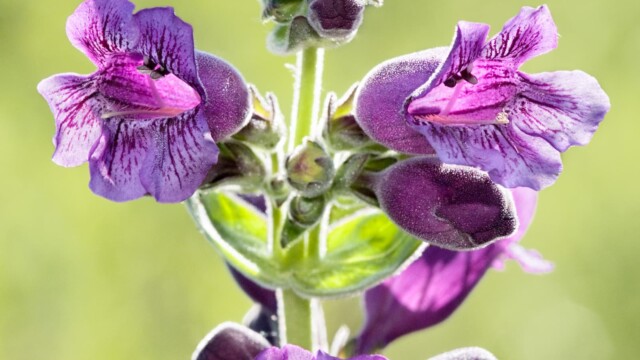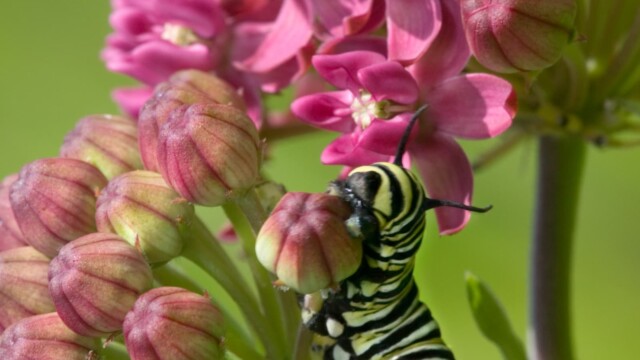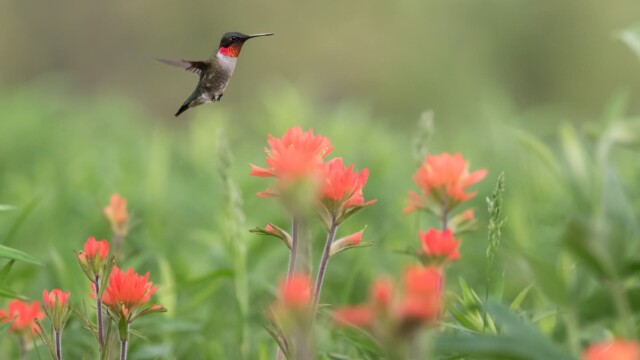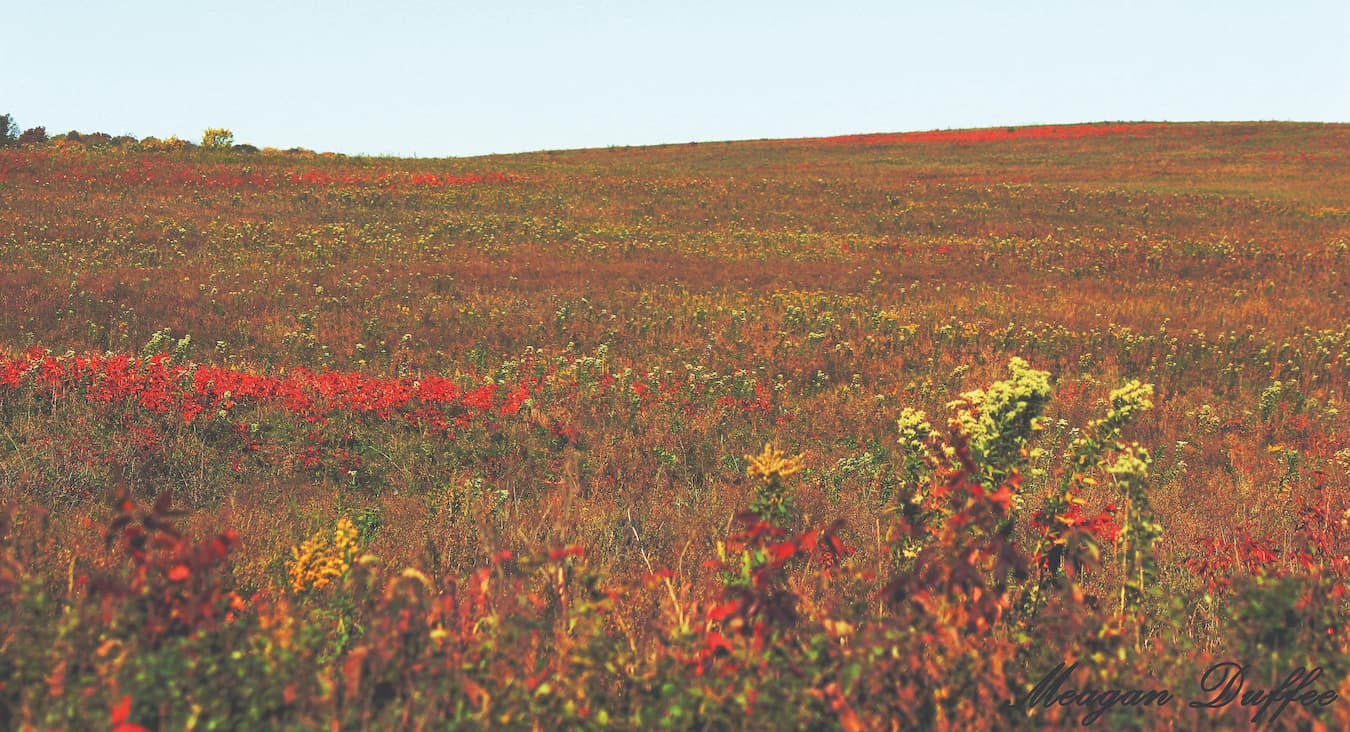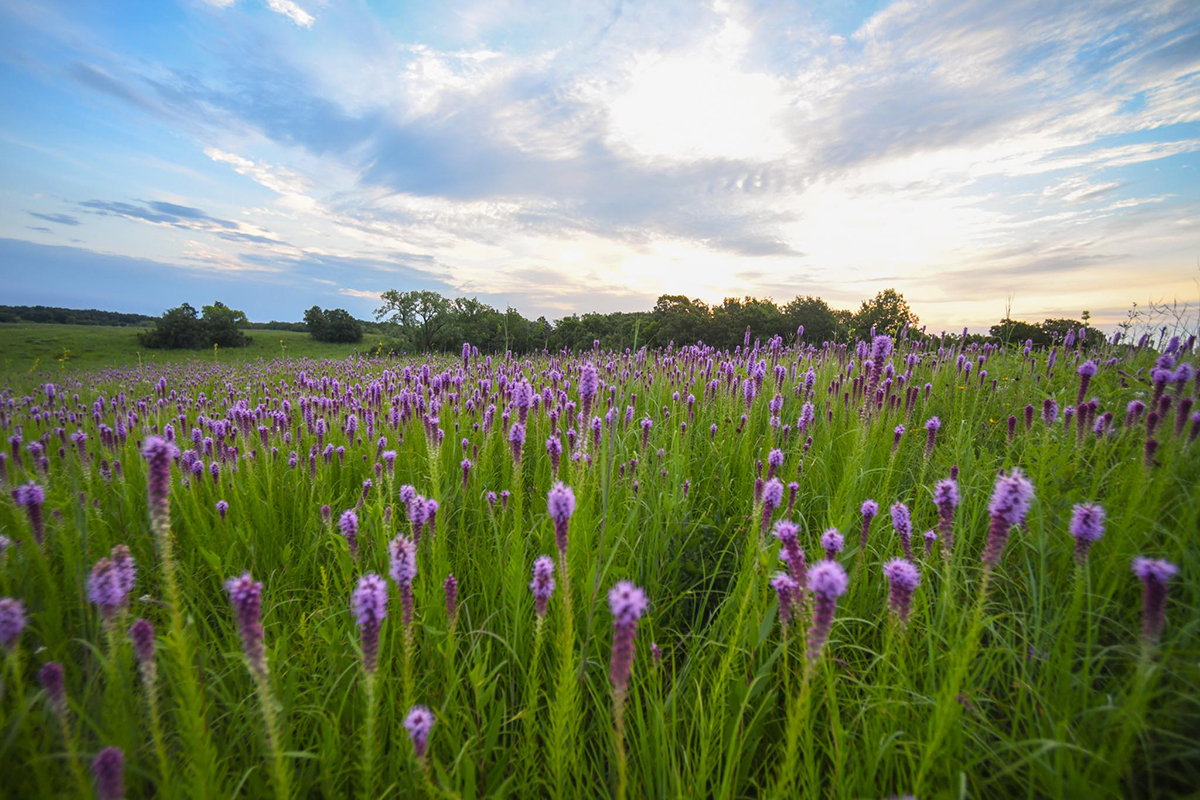At one time, more than one-third of Missouri was covered in prairie—a landscape known for wide-open expanses of verdant grassland. Although much of this habitat has since been depleted, efforts are underway to conserve what remains.
There’s no more dramatic place to watch the changing of the seasons play out than on the prairie. In the warmer months, these landscapes teem with life. Wild rye, prairie hyacinth, tiger swallowtails, ruby-throated hummingbirds, and bison thrive together in a delicate exchange. In the depths of winter, the warm golden hue of the grasses stands in stark contrast to the cold, crystal-blue sky. But in spring, the prairie comes back to life. The exchange begins anew and the spirit of restoration fills the air. It starts with green stalks of grass and multicolored native wildflowers.
More than one-third of Missouri was once covered with prairie. Early Missourians must have felt so small compared to that ocean of grass. Conjuring such an incomprehensibly large mass of life is difficult for our modern minds. The glory days of the prairie—the outsized role that biome played in shaping the history of this region—have passed, never to return. But that doesn’t mean you can’t see a slice of it
Few Missourians know this better than Henry Domke, who has devoted his career as a photographer to capturing the intrinsic beauty of nature including what’s left of our prairies. Henry and wife Lorna both serve on the board of the Prairie Garden Trust, which was established in 1971 to help Missourians discover the state’s native landscape. Learn more at PrairieGardenTrust.org.
You can experience the beauty of springtime on the prairie by visiting the Prairie Garden Trust in New Bloomfield, Missouri, or one of the state’s other remaining prairies. For now, sit back and enjoy these photos for a glimpse of what is left as well as what was lost.
Photo courtesy of Henry Domke.
Article originally published in the May 2019 issue of Missouri Life.
Related Posts
Bison, Birds, and More at Prairie State Park
Natural prairie is the headliner at this state park, but the bison, elk, birds, and flowers are also stunning. Prairie State Park is a unique place, dedicated as a living tribute to a nearly extinguished native landscape.
Hope from Soap
The lack of opportunities after high school for individuals with developmental and intellectual disabilities and unhealthy skincare products are two issues close to sammysoap managing member Karen Copeland’s heart. The unexpected solution to both issues was soap.
Plan now to see never-plowed prairie
There are a 40-acre original, unplowed prairies south of Sedalia, and the public is invited to come to see it Saturday, October 1, at the Missouri Prairie Foundation’s dedication of the plot, called the Goodnight–Henry Prairie.
Prairie Blazing Star: Restoring tallgrass prairie
Less than one percent of Missouri's original prairie remains from pre-settlement days. This photo essay from a farm west of Kirksville illustrates the initiative Roeslein Alternative Energy is leading to restore 30 million acres of prairie in the next 30 years.

